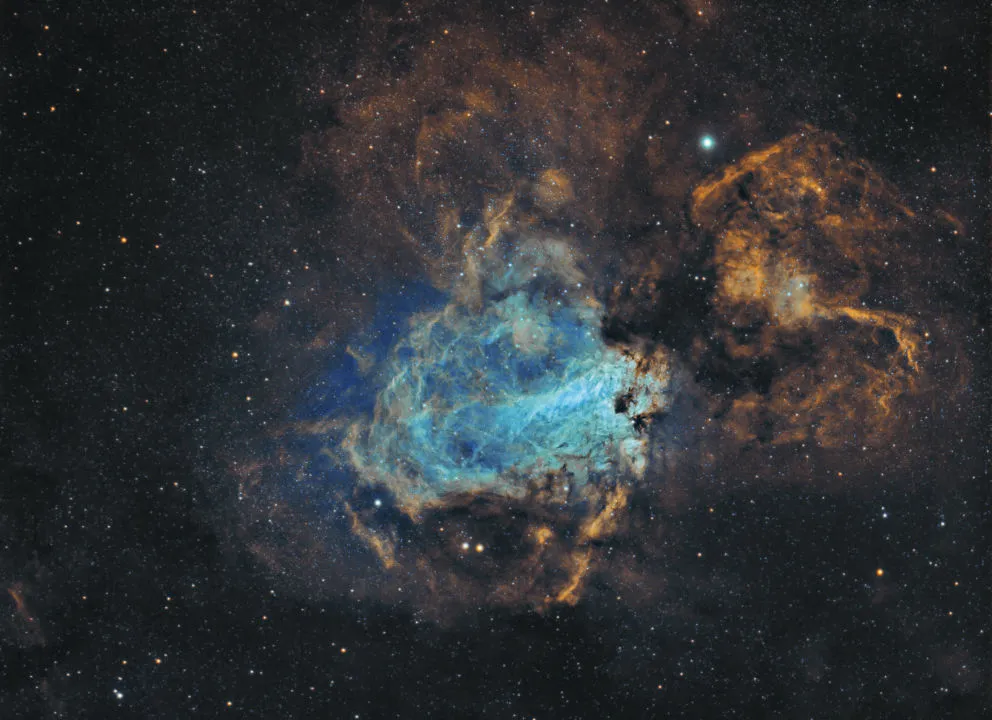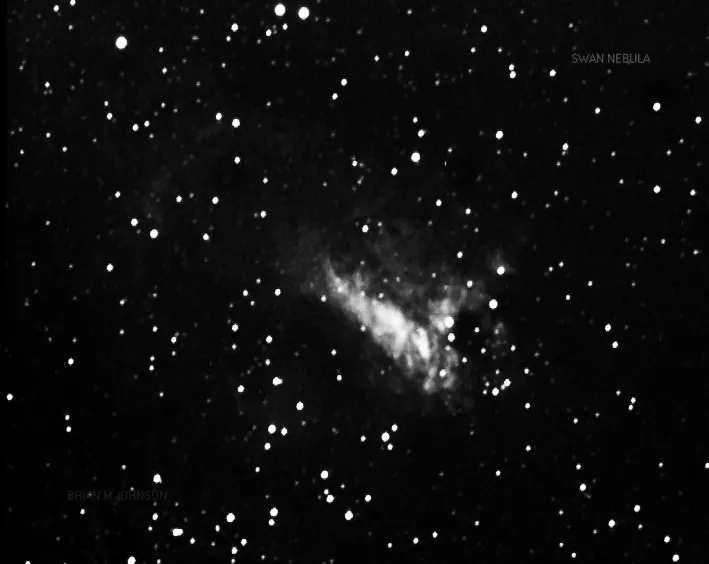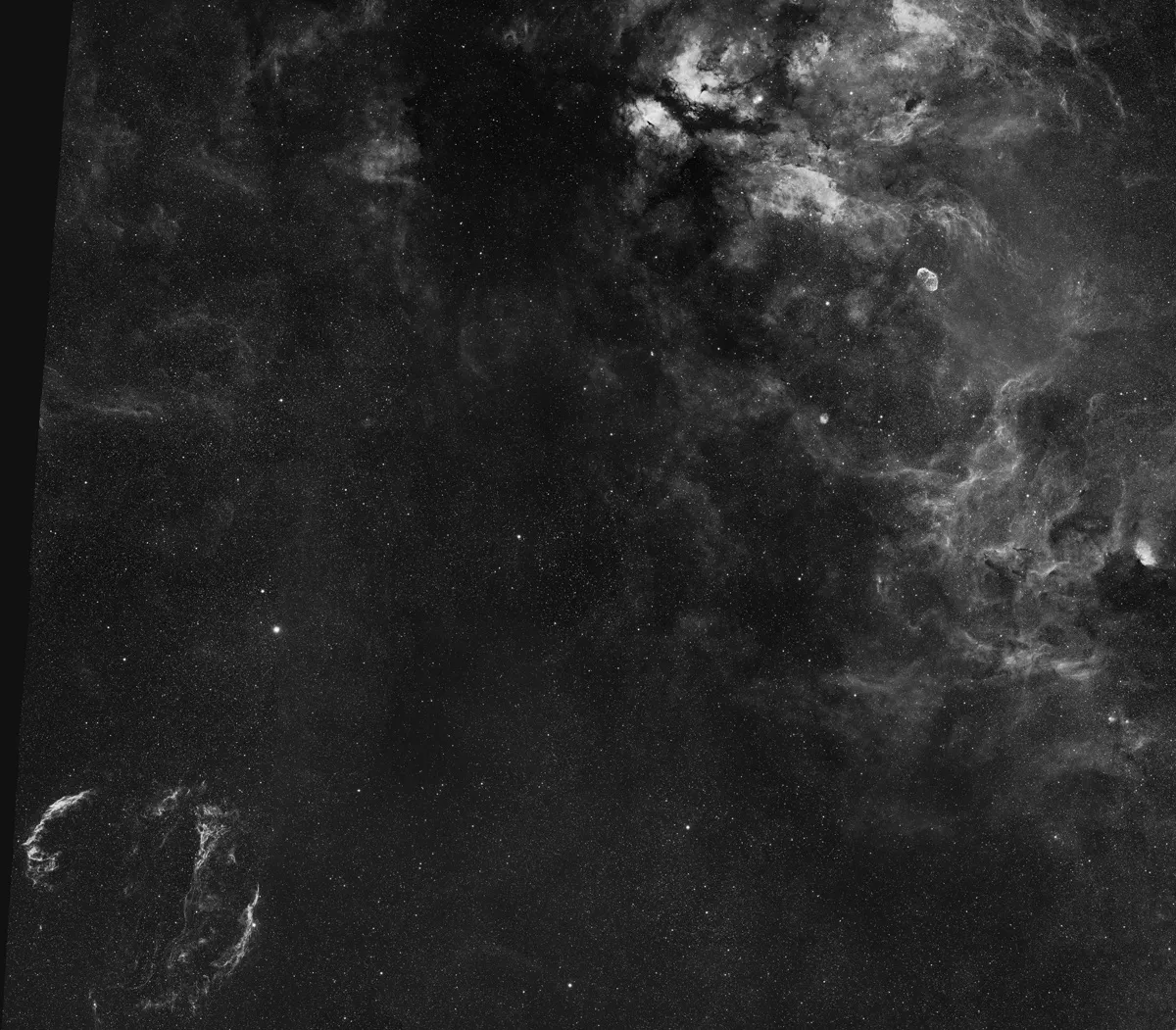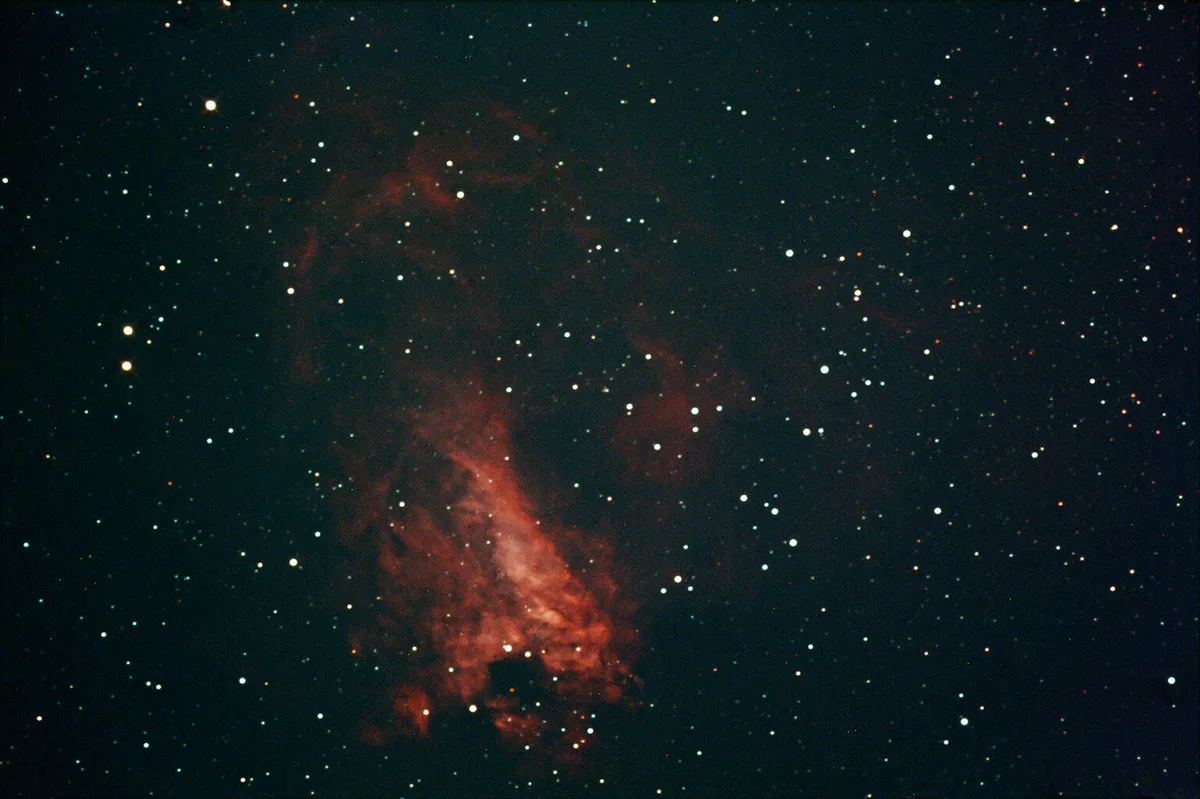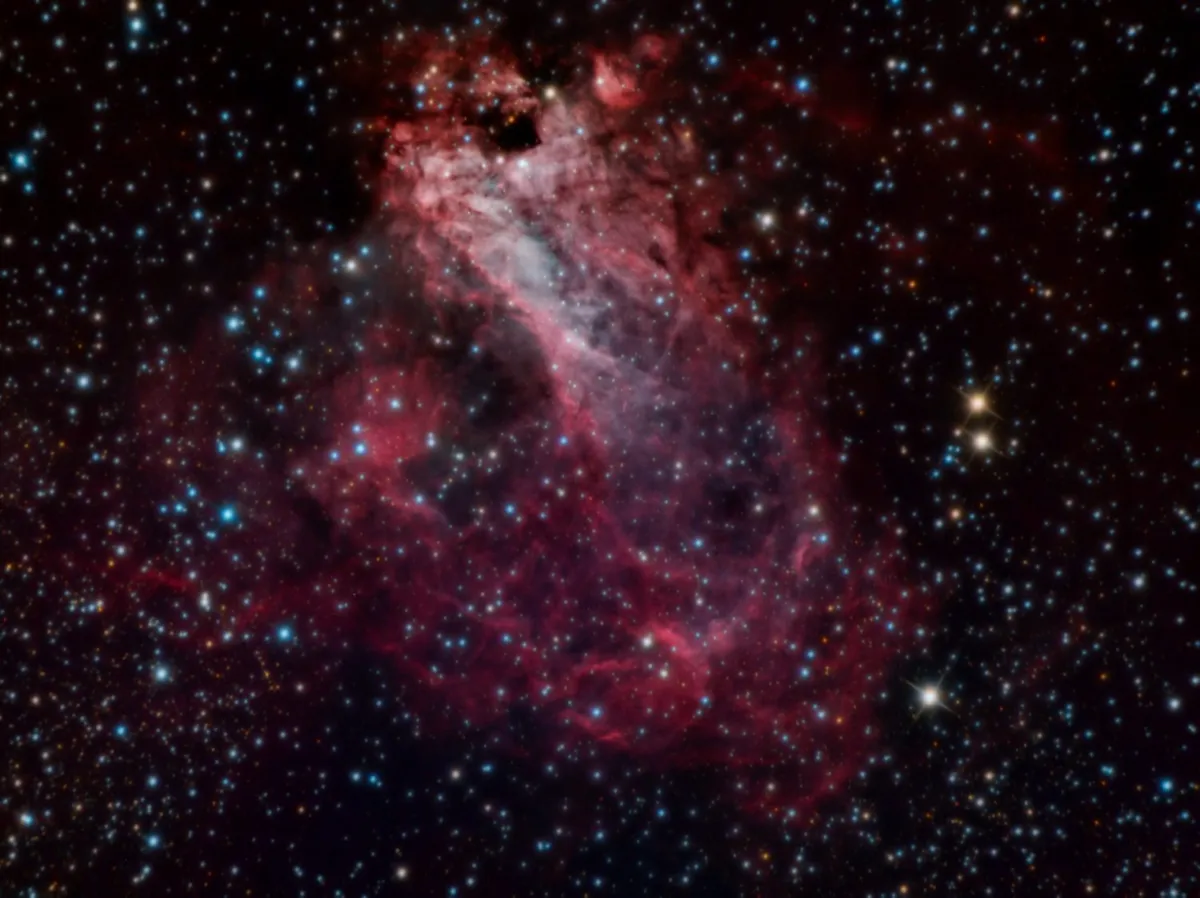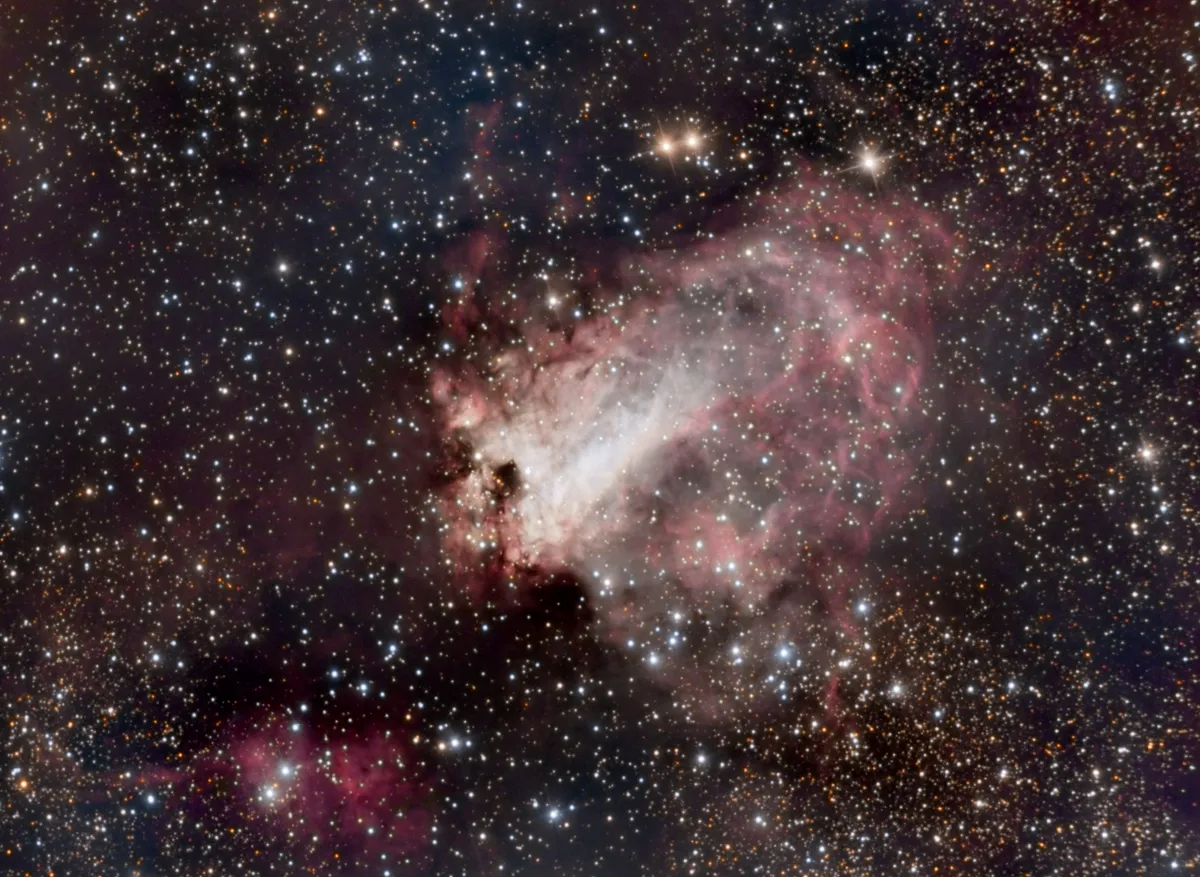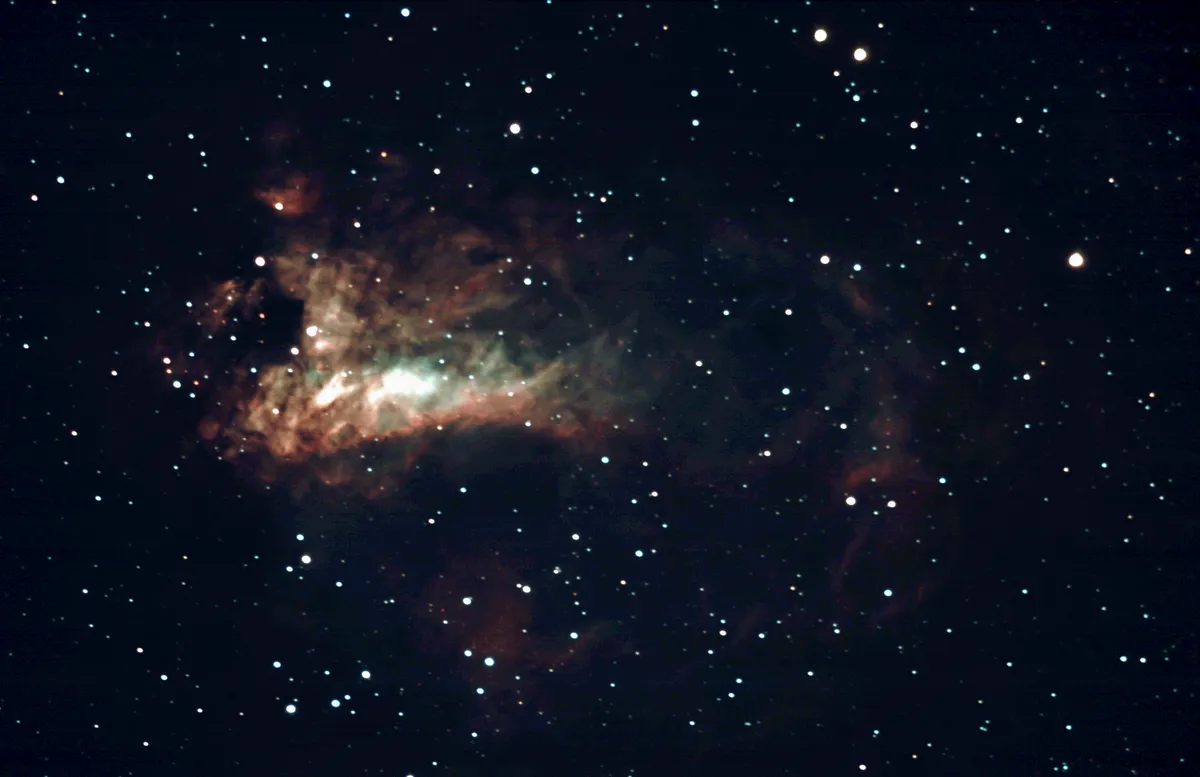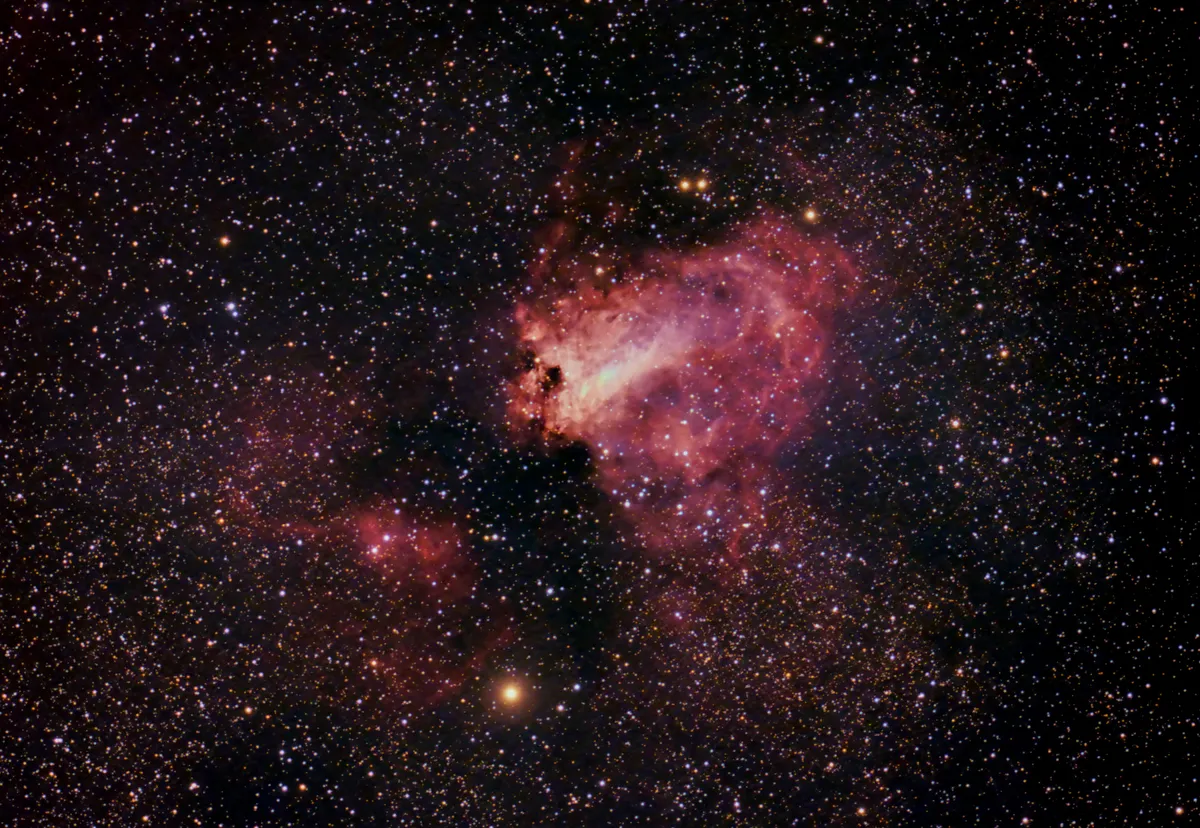The Omega Nebula - also known as the Swan Nebula - is a gigantic star-forming region: one of the largest in our galaxy, in fact.
It was discovered in 1745 by Jean-Philippe Loys de Chéseaux, a Swiss astronomer, and was eventually added to Charles Messier’s deep-sky reference guide, the Messier Catalogue, as entry M17.
The Omega Nebula is 5,500 lightyears away in the Sagittarius constellation and is often photographed along with the Eagle Nebula, M16, due to their apparent proximity in the sky.
Because the nebula is such a prolific star-forming region, it contains many young, newly-born stars, and is host to one of the youngest star clusters in the Milky Way, aged just 1 million years old.
Strong streams of charged particles emanating from these stars known as solar winds carve and sculpt the surrounding dust and gas, destroying the ingredients necessary for new stars to be born.
There's even a study looking at star formation within the Omega Nebula to learn more about the process.
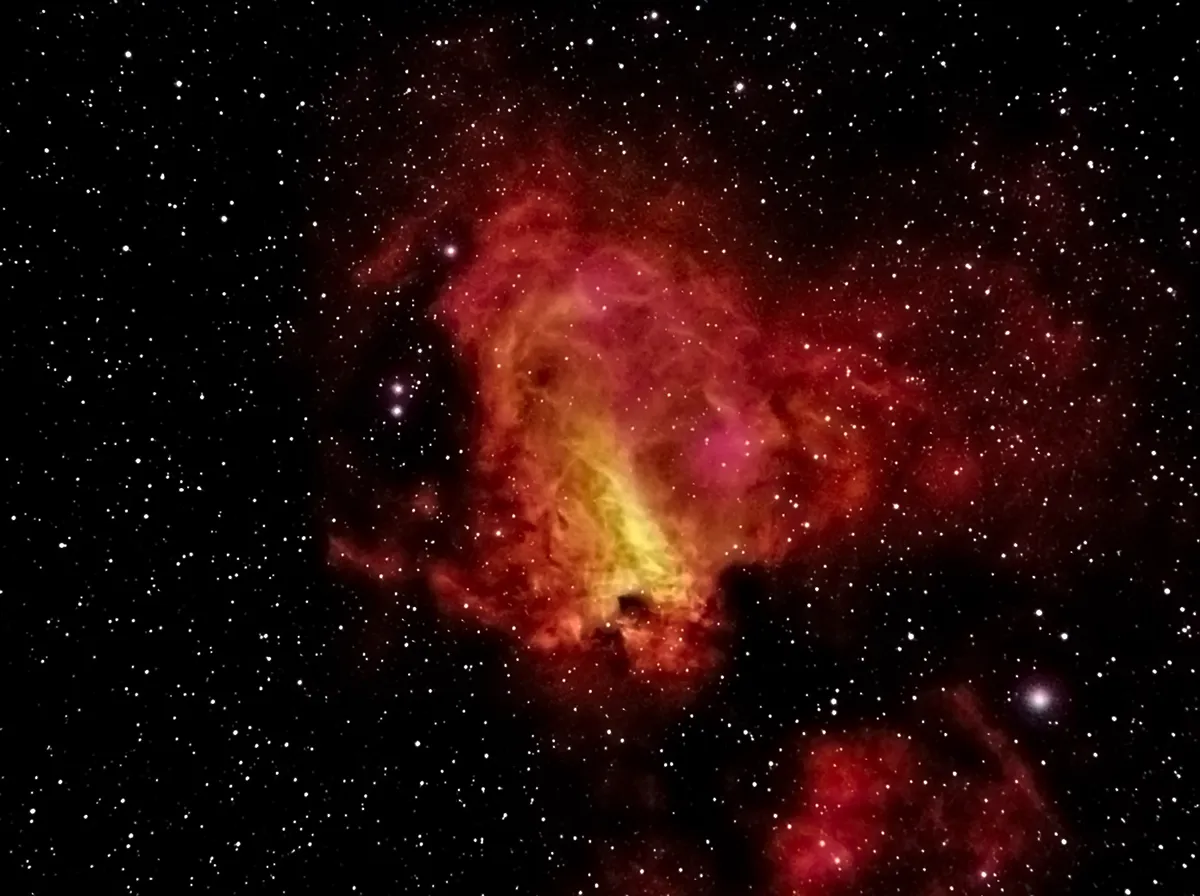
Ultraviolet radiation from the young, massive stars causes the cosmic cloud to glow, producing a beautiful nebula just ripe for photographing.
TheOmega Nebula is also known as the Swan Nebula, the Horseshoe Nebula, the Checkmark Nebula and the Lobster Nebula, most of these names being a reference loop structure that can be seen in images.
The astronomer John Herschel sketched the nebula in 1833 and thought it looked rather like the Greek letter Omega, which is probably why 'Omega Nebula' seems to be the most common nickname for M17.
Below is a selection of images of the Omega Nebula captured by BBC Sky at Night Magazine readers and astrophotographers.
For advice on photographing nebulae, read our guide to deep-sky astrophotography or learn how to fine-tune your images with our tutorial on deep-sky image processing.
And don't forget to send us your images or share them with us on Facebook, Twitter and Instagram.
